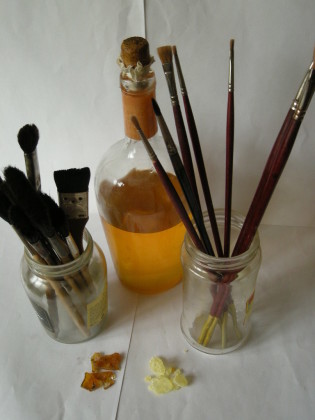
SERGE DRIJAKOFF LUTHIER
VIOLIN AND VIOLA MAKING
VIOLIN VARNISHING
Varnishing is the final phase in which the luthier works, a work as fascinating as it is delicate. Much has been written, said and often misrepresented about the varnish of violins. It has often been reported that the sound of a violin depends on the quality of its varnish ... the varnish which covers the violins of Stradivarius has been attributed exceptional properties ... which is not true!
A violin varnish can be made of oil, or alcohol , this fact does not affect the tone of the violin. An oil varnish will be smoother and take longer to dry than an alcohol varnish, of course, but an alcohol varnish will never prevent a good violin from playing well. A varnish that is too thick, or of the wrong composition, alters the sound of a violin by increasing the tension of the soundboard and the back by stiffening them which has the effect of altering the frequency spectrum of the violin. The matter of concern regarding the sound of a violin is whether the violin concerned has been properly prepared beforehand, If nothing has been done to prevent the varnish from penetrating the wood, or if sealing has been done badly, the varnish will infiltrate the fibers of the wood, transforming it into a real sponge, thus irreparably ruining the sound of the violin.
It is important to know that when a luthier completes the making of a violin, if the instrument is perfectly made, he will already have, at this stage, the possibility of evaluating all the qualities of his instrument, but it is in no case the varnish that will transform , magically, an average violin into a magnificent Stradivarius!

Serge Drijakoff proceeds to the making of his varnish which is classified in the mixed category. It is made from turpentine, natural oil and resin.
